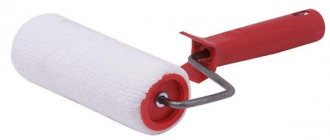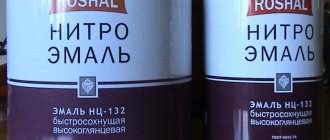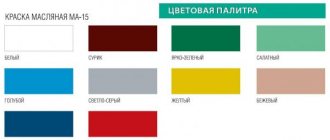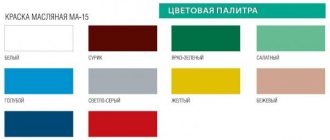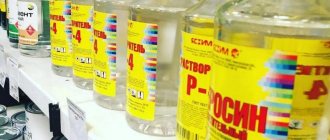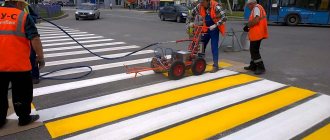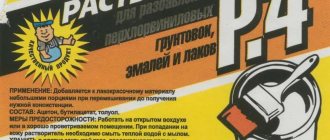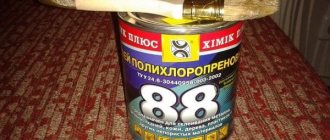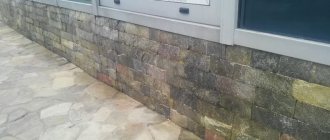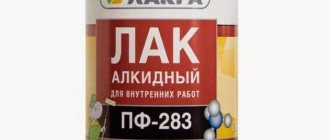Technical characteristics of bitumen varnish BT-577: application, properties
Bitumen varnish BT-577 (also called Kuzbasslak) is used in the field of construction, automotive industry, as well as in other industries. This is a bitumen-type composition that will protect the surface from damage and external influences.
This varnish is made on the basis of petroleum bitumen in accordance with GOST 5631-79. Organic solvents, resins, mineral oils, high-molecular petroleum components, as well as drying additives are used as additional elements.
To ensure that the varnish layer hardens quickly and is as glossy as possible, the composition of BT-577 is supplemented with synthetic components.
Material composition
Varnish BT-577 is produced in accordance with GOST 5631-79. According to the standard, its composition includes petroleum bitumen, which forms the basis of the varnish, as well as organic solvents, mineral oils, asphaltenes, resins, and driers. To enhance the shine of the varnish film and increase the drying speed, synthetic additives are introduced into the composition.
The following are used as diluents:
- turpentine;
- solvent;
- White Spirit.
BT-577 paint is made on the basis of this varnish - to prepare 80% of the varnish, 20% of aluminum powder is added. The production of the product itself consists of several stages. First, a varnish base is made from linseed oil, bitumen and asphaltite, then other components are added to it and a varnish is obtained. Afterwards typification is carried out in a mixer, purification in a centrifuge and filtration. At the end, the material is poured into containers, and it is ready for transportation and sale. Each batch is given a certificate of conformity, a certificate.
Manufacturer
BT-577 varnish is produced simultaneously at several factories, located in different countries. Some of its characteristics may depend on where the product was made. For example, packaging and price.
In Russia, the producers of this varnish are NPF "Emal", LLC "Deal-Profit", LLC "Chelyabkhimprodukt", LLC "Component KSMO", PE "Doronina".
In Belarus, bitumen varnish BT-577 is produced by the scientific and production limited liability company Alkid. This company has been producing waterproofing, anti-corrosion and adhesive bitumen-polymer mastics since 1992. The quality of the company's products is time-tested. It is produced in compliance with all necessary standards.
The products manufactured by this LLC are certified by Gosstandart and the Ministry of Health of the Republic of Belarus, as well as Gosstandart of the Russian Federation. The company was awarded diplomas and certificates for the development of new materials and technologies.
Varnish characteristics
Technical characteristics are determined by GOST specified above.
According to this document, the following parameter requirements are established for this material:
- the appearance of the coating is black, the structure is uniform, without wrinkles, pockmarks, or craters;
- conditional viscosity according to the VZ-246 viscometer at a temperature of +20 degrees – 18–35 s;
- share of non-volatile components – 39%;
- drying time to degree 3 at +20 degrees – 24 hours, at +100 degrees – 20 minutes;
- film hardness according to the M-3 device – 0.20 c.u.;
- film elasticity – 1 mm;
- resistance of the coating to water at +20 degrees – 48 hours;
- resistance of the coating to a saline solution of 3% at +20 degrees – 3 hours.
During storage, the viscosity of the material can increase by 10%; when preparing the solution, the indicator is brought to the original norm. The exact shade of color is not regulated.
Basic properties of varnish
The material is designed to protect metal products from damage, therefore its properties are as follows: resistance to atmospheric conditions - snow, rain, fog, temperature changes. The coating obtained after applying the product does not fade under sunlight for a long time, is frost-resistant, and is not damaged by regular exposure to water, including sea water.
The varnish protects structures and other products from corrosion and prevents the spread of existing rust. It also has antiseptic properties - after its application, the proliferation of fungi, mold, and microbes stops. Wooden surfaces will be reliably protected from rot.
Use as paint
This varnish can also be used instead of black paint. Due to its powerful moisture-proof properties, it is widely used for painting:
- Brick fences, walls, sheds;
- Concrete pillars, supports, canopies over entrances;
- Wooden palisades, street shopping and entertainment pavilions;
- Metal gratings, piles, partitions, city sidewalk barriers, country fences.
Due to its high adhesive properties, this varnish is quite suitable as a reliable adhesive. It is especially often used to glue together building materials that are in the form of plates or rolled into rolls.
Purpose of the material
The product is widely used in construction, in everyday life, in a number of industrial sectors, and in agriculture. Its use is effective on working devices and equipment, on products subject to transportation and storage for up to 6 months. This product is often used to coat agricultural machinery that is to be preserved. The surfaces to be treated must be made of metal and wood, but varnish is often used on surfaces made of slate, brick, and other materials.
Examples of material application:
- wooden posts and crowns of buildings (to prevent rotting);
- walls, floors, ceilings of cellars, basements for protection from moisture;
- garages;
- swimming pools.
The varnish is suitable for imparting decorative properties to any surface, especially old ones. Due to its excellent adhesion to any base, it can be used as an adhesive; it can be used to connect roll and sheet materials. Also, BT-577 varnish is used for the production of paint of the same name, this is its no less important purpose.
What is it used for?
Today, bitumen-based varnish is available in different brands and is used to process a variety of materials. Paintwork materials are in high demand for wood processing. It is suitable for giving a wooden surface the necessary physical and chemical qualities for further use. In this case, it is applied thinly, or the object is dipped into it and then dried. It is also used as a covering layer for concrete, brick and metal.
Bituminous varnish provides an optimal degree of coverage; it is quite easy to apply with a brush, roller, or sprayer. The layer is uniform and neat, there are no drips. Product consumption depends on what kind of material is to be processed. On average, covering 1 sq. m of material requires about 100-200 ml.
Bituminous paints and varnishes are suitable for various purposes in everyday life.
- To protect metal materials from corrosion. There are many ways to combat rust, which affects most types of metal. Varnish coating is definitely a workable solution to the problem. The varnish is distributed over the metal in a minimal layer, preventing contact of the surface with moisture or air. This type of varnish is ideal for application to outdoor structures; for example, the condition of the metal depends on how the fence is painted. If you coat it with varnish, it will last much longer in its original form.
- The second purpose of a paintwork material determines its adhesiveness. The varnish exhibits good adhesion to a number of surfaces and helps to bond certain materials. Due to this, it is used as an adhesive in different situations. This gluing method is often used in the construction field when installing roofing materials. In this case, it is more reasonable and economically beneficial to use the method of cold gluing with bitumen varnish. Let’s say, compared with hot gluing with bitumen, the use of paints and varnishes from a safety point of view prevents a possible fire.
- The third purpose of bitumen varnish is to make surfaces resistant to moisture. It is often used to treat wooden surfaces, preventing them from getting wet. As a result, the moisture resistance of the item is enhanced and it lasts longer. This composition serves as reliable waterproofing for quite a long period of time for structures and premises such as swimming pools, garage buildings, basements or cellars.
There are many areas where this material is successfully used. Bitumen composition is widespread due to its affordable price and acceptable composition. Moreover, this product is ideal for decorating all kinds of surfaces. Varnish is in demand in decoupage, and some brands give the materials a glossy shine, while others are intended to imitate antiquity. The item processed by him gives the visual impression of being antique.
Paintwork materials with brown pigment are suitable for fiberboard and tree cuts, as they give the material an attractive tone. However, varnish made on the basis of bitumen components is universal and suitable for many production processes and everywhere in everyday life. But it remains suitable only if stored properly. The product must be stored under the lid, tightly closed, at a room temperature of +30°C and not exceeding +50°C
It is important to protect the material from contact with direct sunlight
Currently, bitumen varnishes are produced by numerous manufacturers. Various components are used for manufacturing. Therefore, the composition of varnishes on bitumen may not comply with GOST. The original version of paintwork materials uses natural resins and bitumen.
Price and consumption
The most famous . The material is also produced by LKZ Kolorit, Novbytkhim, and a number of other companies. Before purchasing, you need to calculate the required volume, for which you need to take into account the consumption per 1 m2. This figure is approximately 0.15 kg/sq. m. The indicated amount is used for one layer of varnish. The manufacturer indicates the need for two-layer processing.
BT-577 is available for sale in different packaging - from 0.5 kg to 50 kg. The cost of a 0.5 liter package is 42–60 rubles, depending on the manufacturer, 1 liter can be purchased for 80–130 rubles, 5 liters for 515 rubles. Large packages are more profitable - for a 50 kg container you need to pay 3500–4000 rubles.
Delivery
Delivery services by the transport company are paid by the recipient upon delivery to the terminal of the transport company in the destination city (or to the address in the destination city)
Delivery costs are calculated according to the tariffs of the transport company
Delivery methods
For customer convenience, we offer the following order delivery methods:
- pickup
- by our transport (by prior agreement)
- motor transport company: PEK, Business Lines, Baikal-Service, RATEK, KIT, Vozovoz, and other transport companies are also possible.
Mode of application
It is important to properly prepare the surface. To do this, it is cleaned of rot and mold (if we are talking about wood), cleaned of rust, dirt, oil, salt, grease (metal products). Painting can be carried out without prior priming.
If necessary, the material is diluted with solvents - solvent, white spirit, toluene. A mixture of these solvents can be used. Mix the varnish well and allow air bubbles to escape for 10 minutes.
For painting work use:
- rollers;
- brushes;
- paint sprayers.
The material is also applied by dipping or pouring (rolling), usually in this case we are talking about individual parts or small surfaces.
Other important rules when using BT-577:
- ambient temperature during painting work +5…+35 degrees;
- surface drying time – 24 hours at room temperature (+20 degrees), drying can also be carried out at a temperature of +100 degrees for 20 minutes;
- It is recommended to apply 2 layers of varnish, the drying period between them is similar.
Product certification
All varnishes can be divided into several large groups according to the type of solvents they contain: oil, turpentine and alcohol. Each has its own functions and properties.
In our country, the presence of a certificate of conformity for varnish is advisory in nature. It is required only in rare cases. But all paint and varnish materials must have a declaration of conformity. How are they different? According to the certificate of conformity, responsibility for the information falls on both the certification body and the declarant. Only the certification body is responsible for the declaration.
For bitumen varnish, it is not necessary to issue a certificate of conformity for its release for sale in the Russian Federation. But this document is necessary if the products participate in government tenders and transactions. It increases the competitiveness of varnish in the market. State certification centers conduct tests in laboratories, on the basis of which a certificate is issued. The document must be completed in advance.
Thanks to the certificate of conformity confirming the high quality of the product, the varnish is gaining great popularity among both ordinary buyers and professionals.
Storage and Security
The presence of solvents and other synthetic components makes BT-577 varnish toxic to humans. It should be applied to products only in strict compliance with safety rules. The respiratory tract is protected with respirators and gas masks; the room must be equipped with supply and exhaust ventilation. It is safer to carry out work in open areas. Hands are protected with gloves, body - with thick clothing.
If the material gets into your eyes or skin, wash them immediately with water (the skin, if necessary, can be wiped with any solvent, then washed well with soap). If varnish gets into the stomach, you should induce vomiting, rinse, take sorbents and drink plenty of liquid.
The material is explosive and flammable. It is stored only in an unheated room, tightly closed, away from any sources of fire or heat. Shelf life – 6 months, store away from moisture and sunlight.
Details
How to apply bitumen varnish correctly
Before using varnish, the material to be treated should be thoroughly cleaned of dirt, corrosion, oil and grease stains, and salt deposits. If you need to cover wood with it, then the base should be free of mold, rot and dirt. The surface to be varnished does not even need to be primed in advance. If Kuzbasslak is very thick after opening the container, then it should be diluted. After pouring in the solvent, the varnish should be mixed as best as possible and left for 10 minutes.
This is enough for all air bubbles to escape from the product. The technical characteristics of bitumen varnish BT-577 are such that it can be applied to surfaces with a brush, roller or airbrush. If small surfaces are varnished, then the instrument can be dipped into the varnish, but if horizontal walls with a large area are opened with the composition, then it is better to use the pouring technique.
Work should be performed in a room with an air temperature of +5 to +35 degrees. The average drying speed of one layer in such conditions will be 24 hours. If you dry the composition at the boiling point of water (+100 degrees), the layer will harden in 20 minutes. It is best to apply the product in two layers, then between each application there should be enough time for the previous layer to dry perfectly.
Security and storage
BT-577 varnish is a mixture of chemicals and solvents that are toxic, which means they will pose a danger to people. When using, safety precautions should be observed, and work should be carried out in a respirator or gas mask to ensure respiratory protection. When working indoors, you should create good ventilation and a flow of fresh air, and if possible, it is better to carry out painting work outside. When applying the composition, hands should be protected with rubber gloves, and the rest of the body with special clothing.
Eye protection should be worn:
- If the varnish mixture gets on the surface of the skin or mucous membranes, they should be immediately washed with a large stream of water.
- The skin can be wiped with a solvent, and its residues should be washed off with a soap solution.
- If varnish accidentally gets into the stomach, you should induce vomiting and rinse the stomach with plenty of water.
- You should also definitely take any sorbents.
A varnish such as BT-577 is fire and explosive. It is important to store it away from sources of heating and open fire in a tightly closed original container. The container cannot be heated, and it should be stored in an unheated storage facility with a low degree of humidity, out of direct sunlight, away from food, and away from small children. The shelf life will be six months from the date of packaging.
Varnish analogues
Interestingly, this varnish has many analogues:
- BT-350. Ideally used for periodic protection of wood, metal, concrete, brick from mechanical damage and moisture.
- BT-123. Used to protect metal and other structures during transportation or long-term storage.
- Bitumen-rubber mastic. It is used for roofing work, waterproofing of built structures, arrangement of underground steel pipelines as an insulation composition that prevents soil corrosion.
- Hyperdesmo PB-2K. We are talking about polyurethane-bitumen mastic, which is used to protect concrete, metal, and other substrates from moisture and corrosion.
- Hempinol is a fast-drying, bituminous, highly structured coating.
- Nova-grif is an anti-corrosion mastic based on bitumen, and it includes components such as targeted additives, synthetic resins and solvents.
Now let's look at the list of the best manufacturers.
Manufacturers and cost
The main manufacturer of bitumen varnish BT-577 is a plant called Kuzbasslak. There are other enterprises - Kolorit, Novbytkhim, etc., and all manufacturers will package the varnish in containers with a volume of 500 grams to 50 kg. The average cost for 0.5 liters of varnish will be from 50 to 70 rubles, and for a liter of product you will have to pay from 100 to 130 rubles. A 5-liter bucket costs 500 rubles. Containers of 50 kg are sold for 3600-4100 rubles. The cost will largely depend on the volume of containers and the manufacturing company.
